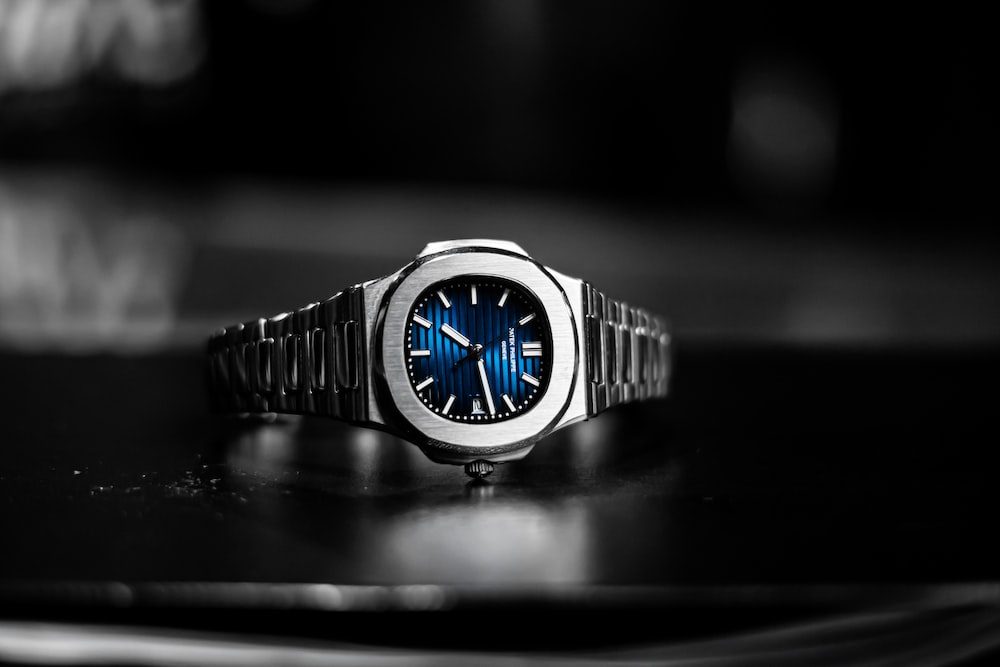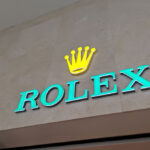It’s a multimillion dollar company that’s run as an independent family business; a worldwide name that only makes 50,000 watches every year and a brand that is stepped in history but that still pushes the envelope in terms of technological advances.
Today we’ll be talking about an independent brand, but naturally no ordinary independent, since we’ll be going over the history of one of the most prestigious names in watchmaking, if not the most prestigious: Patek Philippe.
A young Polish émigré called Antoni Patek first met Francziszek Czapek in 1839, also a polish émigré but of Czech origin, and they started to make pocket watches together.
But when a few years later this didn’t work out any longer between the two, Antoni Patek threw in his lot with a Frenchman who had developed an innovative stem-winding and setting system, the crown. That man was Jean Adrien Philippe and by 1851 Patek Philippe was born. It’s easy to assume that the rest was a gold-plated road to success, but Patek Philippe wasn’t always the behemoth it is now; in fact Thierry Stern, today’s CEO and most importantly today’s owner of the brand, well he was closer to the truth when, back in 2014, he referred to Patek as a niche brand due to the relatively low number of watches it produces per year.
The party line is that the brand still only produces around 50,000 a year but the most basic maths involving number of boutiques worldwide and the number of watches in said boutiques at any one time would put the figure maybe a bit higher than that. Anyhow, back in 1872, when Patek had its sights set on New-World expansion, the idea of making 50,000 watches would have seemed like a total pipe dream.
It was actually Rio di Janeiro, or more specifically the Rio-based retailer Gondolo & Labouriau, that kickstarted Patek Philippe’s timepiece business. It was in November 1872 that the first watches were sent to this store. That one led to 22,000 watches and a retail relationship second only in importance to the one with Tiffany and Co, which began with a handshake between Antoni Patek and Charles Lewis Tiffany in 1851. This relationship with Gondolo and Labouriau is intriguing because this was a retailer who sold watches to ordinary people, not multimillionaires or royalty.
It even set up a subscription service to help people buy into the brand. 180 people signed up and paid the equivalent of 10 francs over 79 weeks. A prize draw was also incorporated into the scheme with a lucky number being drawn each week and the winner getting his Patek for whatever he had paid up to that point. This initiative is a prime example of Patek Philippe’s early realisation that a brand is nothing without marketing – an attitude we will see recurring throughout the brand’s history.
By 1924, despite the luxury watch market coming to a complete standstill during WW I, 28% of Patek Philippe’s business was now wristwatches. However, in a move that symbolised Patek’s slightly dismissive view of wrist-worn timepieces at the time, rather than making its own movements, at this stage it was still relying on ebauches from the likes of LeCoultre, Piguet, Meylan and Duret. Not all of these movements were of the highest quality and Patek even had differing price points for its watches to reflect the varying qualities of the movement. Well as strategies go, it wasn’t the smartest move and by 1930 Patek, despite having just accepted the Graves Supercomplication commission (one of the most complicated pocket watches ever made and commissioned by banker Henry Graves in order to outdo the Grande Complication pocket watch owned by US carmaker James Ward Packard produced by rival Vacheron Constantin), well Patek was seriously staring down the barrel of collapse.
Gondolo and Labouriau, once such a goldmine for the brand had been irrevocably destroyed by the war and a depressed economy, and now owed Patek Philippe a very large amount of money at the time. The brand was even driven to melting down gold watch cases in order to pay its employees. In a move that was to change both Patek and its fortunes, in 1933 the board accepted an offer from respected dial makers Stern Freres rather than going with LeCoultre’s bid. One of the first things the Sterns did was get rid of the tiered quality and price nonsense and decided to start making the wristwatch movements in house.
It was from here that the Patek Philippe we would recognise today began to emerge. Under the new technical director Jean Pfister, watch reference numbers were used, the watches were furnished with original calibres made in house and the mastery of extreme complications such as grande sonnerie. And Pfister didn’t mess around – between 1934 and the outbreak of WWII in 1939 ten new calibres, for both men and women, were introduced, there was even a chronograph movement, which was based on a Valjoux but completely overhauled by Patek.
Despite having moderate success in its home town of Geneva as well as in other European hubs, the Sterns knew that the most important market to break was the US; something Antoni Patek understood having done just that back in 1855 in a New World trip that led to the brand’s formative relationship with Tiffany & Co. So in 1937, Henri Stern was sent out to America to convince the great and good to spend their hard earned dollars on luxury Swiss watches. By the time war started Patek Philippe had started to turn a modest profit but the European market was plunged into chaos again. Stern briefly returned to Switzerland but by 1940 he was back in New York and helping Patek benefit from a comparatively buoyant US market.
So business-savvy was Henri Stern that he even managed to get in with the US Armed Forces, supplying them with imported chronographs from Universal Geneve watches from 1942 when the US entered WWII. Because the US suffered none of the hardships Europe did after WWII, it was in a position to buy luxuries such as watches, which the consumers obviously did very enthusiastically because, in terms of sales, the post-war US market had as much of an effect on global watch sales as China would do at the beginning of the Noughties.
It would take another 20 years before the likes of Germany, Italy and even England were in a position to import watches of Patek’s value but the US was booming and people were buying. Patek obviously benefitted from this but despite continued advertising campaigns, which could now boast “Geneva and New York”, it was still a brand for those in the know rather than the masses. The end of the war marked a period of expansion and innovation, but one that sadly wasn’t to be seen by Charles Henri Stern, who died on April 2 1944.
One of the many things Charles didn’t get to witness was the launch of the Gyromax balance – an invention that Patek biographer Nick Foulkes described as “so good they patented it twice”; in 1949 and 1951 respectively. The balance in question is an adjustable mass balance wheel, which means that, instead of weight adjustment screws on the outside of the wheel, as in traditional balances, this has six to eight turnable weights called collets.
When the cutout part of the collet is pointed towards the outside of the balance wheel, the heavier side is towards the middle, which decreases the moment of inertia, thereby increasing its speed. Reverse the position of the collet and the wheel moves slower. The collets tend to work in opposing pairs, with a watchmaker having the option of adjusting them singularly or as a pair in order to adjust the wheel’s balance. It would have been an amazing achievement at any time, but, coming as it did after WWII, it showed that Patek Philippe was not going to cling to the past in order to get the brand on steadier financial ground – it was going to improve its fortunes through innovation. It wasn’t just in the mechanical realm that Patek were future-proofing – rather presciently, in 1948, Henri Stern set up an electronics division with the express purpose of investigating quartz technology. It was a clever move, and one that would have been even more intelligent had not the Swiss snobbery and let’s say lack of vision or conservatism about putting quartz into a wrist-bound form confined its experimentation to clocks only.
Gyromaxes aside Patek spent most of the 1950s making watches that appealed to a new jet-set generation of moneyed global nomads. In 1958, the Comet IV became the first scheduled jet to fly out of New York City. Patek capitalised on this by marketing its perpetual calendar Ref. 2597, which gained the monikers the “Cross Country” or “Two Time Zone” to the new world travellers, emphasising the “push button time”, two pushers at eight and ten o’clock, which allowed the time zone to be easily changed.
There were other innovations, mostly created by the avant-garde designer Gilbert Albert whom Henri Stern hired in 1959 to shake things up, but like the linear-time display Cobra, which contained the tonneau-shaped calibre designed by Louis Cottier – a design adapted by Urwerk in 2006 for its UR-CC1– they are confined to prototypes in cases in the Patek Museum. December 25 1969 is a date many in the watch industry will have etched on their psyche. It was the day Seiko unveiled the Astron – the world’s first quartz watch and the thing that almost killed off the Swiss watch industry.
The Swiss weren’t completely ignorant of the developments happening in quartz technology. In 1960 research had begun on what was to become the beta-1, the first Swiss quartz watch, that was to lead to the Beta-21 – so named because it was developed at the Centre Electronique Horloger (CEH) laboratories in Neuchatel by 20 Swiss watch brands, including Omega, IWC, Rolex and, of course, Patek. The first watch containing the Beta-2, the Omega Electroquartz, was launched in 1970 and could have been a competitor to the Japanese but the Swiss reluctance to throw any marketing weight behind quartz combined with President Nixon withdrawing the US from the Bretten Woods System in 1971, which contributed to the Swiss mechanical watch industry to go into freefall. The reason for this is because the Bretten Woods system was an accord signed by the Allies in 1944, which saw the birth of the International Monetary Fund – an economy stabiliser that tied all the major currencies to gold.
Once Nixon withdrew, the dollar became decoupled and its value dropped from CHF4.33 to CHF1.60. The consequence is that overnight Swiss watches became three times more expensive, which sent the whole industry into a dizzying freefall. From having a 43% market share in 1977, by 1983 the Swiss had` just 15% of the watch market. In 1974, it was producing 84.4m watches and movements and just nine years later that had dropped to just 30.2m. Serious resizing of the industry! But Patek Philippe did better than most.
It diverted some of its funds to developing its own quartz calibre, meaning that by 1979 it was self-sufficient in terms of its quartz watch production, but it was also making interesting gains in the auction world, thanks, in no small part to a man called Alan Banbery. Banbery started at Patek in the 1965, having joined the brand from British jeweller Garrard, and his auction house dealings started merely as a way to furnish a room – the visitor’s waiting room at the Rue du Rhone head quarters to be precise. Banbery and Philippe Stern, second generation owner, thought it would be a good idea to display examples from Patek’s back catalogue in the room, except they didn’t have any to hand.
Banbery got wind of a private auction of the personal effects of a Swiss actor called Michel Simon. Among the lots was a collection of 400 pocket and wrist watches, which, as luck would have it, contained five vintage Pateks in excellent condition. This archive was the genus of the Patek Philippe museum and the beginnings of the brand cleverly driving up its own prices at auction in order to furnish its burgeoning vintage collection. But it wasn’t just acquisition that was driving up prices – Patek were clever enough to mount exhibitions of these extraordinary pieces around the world; using them as a way to reacquaint the public with the brand and illustrate the prestige accrued by 130 years in the business.
However, what really cemented Patek Philippe’s reputation as an auction-house hit was the decision made by the Geneva-based Habsburg Feldman (later known as Antiquorum) to hold a monobrand auction called The Art of Patek Philippe. It was a move that cemented Patek’s reputation as a brand of value and importance to connoisseurs and collectors alike. Interestingly enough, Patek’s reputation, like a few other luxury brands at the time, was also saved by steel. And Gerald Genta.
The story goes that Genta did the sketch for the Nautilus, launched in 1976, in just five minutes, inspired by the porthole of a ship. Named after Captain Nemo’s ship in Twenty Thousand Leagues Under the Sea, this was a luxury watch in steel. As with its main competitor, Audemars Piguet, who created this market 1972 with the Royal Oak, making a high-end piece in steel was completely new for Patek and, although the watches weren’t exactly cheap, they did appeal to a younger clientele who wanted something more versatile than a dress watch but who didn’t want to slum it with the current offering in steel. It was a bold move but one that was to create an icon for Patek; one that is still relevant 40 years later.
Having shored up the brand’s past, Philippe Stern was now able to turn his attention to the future and that meant investing in machinery and new technologies. The only brief diversion from this was the celebrations, in 1989, for the brand’s 150th anniversary, front and centre of which was the Calibre 89 – nine years in the making and the most complicated watch around at the time. It was a 88.2mm representation of technical mastery featuring a perpetual calendar, astronomical indications, grande and petite sonneries, a minute repeater and a retrograde date and plenty more with 33 complications in total.
It was also a brilliant marketing tool that, thanks to its tour, reignited the public’s desire for complicated watches – something that Patek was about to be in a very good position to satisfy, thanks to work starting on a 25,000 m2 space in a rather uninspiring location called Plan-les- Ouates. It seemed like, once Patek had got most of its operations under one single roof – the brand opened its new facility in 1996 – there was simply no stopping it.
The Pagoda Ref. 5500, which was launched to commemorate the opening, was swiftly followed, in 1999, by the Twenty~4 – a bracelet watch specifically designed for women that was to pave the way for the industry-leading Ladies First Chronograph in 2009, which saw Patek Philippe debut a new movement, its CH29-535 PS calibre, in a women’s watch; something that was unheard of at the time. Then there was the Star Calibre 2000 – a watch with 21 complications, including a running equation of time synched to the perpetual calendar, which could be set using a rotating bezel and additional to this and by 2005 Pateks started appearing with the words “advanced research” on the dial, indicating that these contained Patek’s latest innovation – for instance a Swiss lever escapement with a silicon escape wheel made using Silinvar. This was something Patek’s specifically formed Advanced Research department had been working on for a while.
Charged with finding new ways to stop the mechanism from being affected by things such as temperature, magnetism and friction, its first innovation was this version of silicon that was developed by CSEM (Swiss Centre for Electronics and Microtechnology) in Neuchatel in exclusive collaboration with Rolex and the Swatch Group and has unique properties such as extreme hardness that reduces wear and also the need for lubrication, it is anti-magnetic, and extremely light.
Silinvar then turned up in 2006’s Spiromax balance spring, which featured the patented “terminal curve” design, which basically means the spring is thicker at the outer end; a detail that forces more symmetric expansion and contraction. By 2011, Patek had decided to ditch the balance wheel all together in favour of an hourglass shaped component made from Silinvar. This was a very important breakthrough in terms of finding ways to minimise aerodynamic drag and was also the final innovation that led to Patek Philippe ditching the Poinçon de Genève in favour of its own Hallmark.
As the spirit of technical innovation has started to reign supreme at Patek, Philippe Stern felt that the criteria of the Poinçon de Genève had not been updated in order to take these advances into account. Mr. Stern also wasn’t happy that the stipulation that only watches made in the Canton of Geneva still applied. So in 2009 he introduced the Patek Philippe Seal – a hallmark of quality that is applied to every entire finished watch after it has been tested against stringent in-house criteria.
Speculation about Patek’s motives in doing so were rife and one of the main ones was that Patek felt that its watches shouldn’t be ranked alongside newcomers such as Roger Dubuis and Cartier, who were rightly proud of their Poinçon de Genève status, because these brands didn’t have a virtually integrated manufacture, remember our episode in this series concerning the Richemont Group.
There were also eyebrows raised at what was perceived as Patek’s refusal to have outside and impartial bodies judge its watches. Although this, and Patek’s innovations, were garnering all the headlines, in the background Stern was quietly buying up businesses that moved Patek closer and closer to being entirely self-sufficient. Calame & Cie, the high-end casemaker, was acquired in 2001, followed by a polishing workshop called Poli-Art and gemsetters SHG (Sertissage Haut de Gamme), while in 2004 it absorbed a dial maker from Saint Imier called Fluckiger & Fils that was experiencing difficulties. It was a process entirely in keeping with the expectation that, at Patek Philippe, all company presidents will have a vision for the company.
And one that generally extends a decade into the future. That is certainly something Philippe’s son and successor Thierry Stern, who took over in 2010, has. As well as having overseen the 175 th anniversary celebrations, which saw the brand launch a 20-complication, ornately engraved pocket watch called the Grandmaster Chime on account of it including a complex grande sonnerie that chimed the quarters with three notes rather than two and a series of historically immersive exhibitions in places such as London, he is currently in the process of completing the next phase of expansion of the Plan-Les-Ouates facility and this is a serious expansion, it’s big! This expansion is set to finish later of this year and it will add another 50,000 m2 space that will house, among other things, an academy so that the watch industry can start to train future generations in elements of watchmaking craft that would otherwise be lost.
It will also be the site where Patek will develop an in-house simple manual-wind movement, in an effort to entice a younger market who maybe can’t quite stretch to anything in the current collection, though given the platinum-and- diamond iteration of the Nautilus that was launched to celebrate the iconic design’s 40 th birthday, it’s safe to say Patek isn’t about to start a price war with the likes of Omega any time soon.
In nearly 200 years, Patek Philippe has gone from being a niche brand to a name synonymous with excellence in watchmaking with a fulgurant development over the last 4 decades and like I’ve already said a few, they are in a league of their own.






